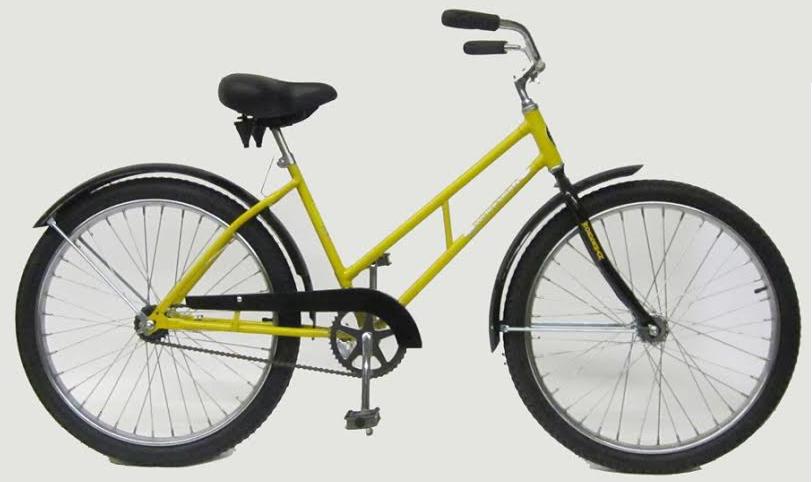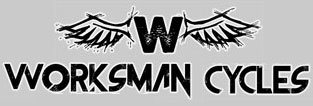What is the Right Seat to Pair with American Made Bicycles?
 You've thoughtfully chosen an American-made bicycle, trusting in quality craftsmanship and durable design. But have you given the same careful consideration to your bicycle seat? If you've ever ended a ride prematurely due to discomfort or numbness, you know the seat isn't just an accessory; it's central to your riding experience. A poorly matched saddle can take all the joy out of cycling, while the right choice can transform your rides into something you genuinely look forward to.
You've thoughtfully chosen an American-made bicycle, trusting in quality craftsmanship and durable design. But have you given the same careful consideration to your bicycle seat? If you've ever ended a ride prematurely due to discomfort or numbness, you know the seat isn't just an accessory; it's central to your riding experience. A poorly matched saddle can take all the joy out of cycling, while the right choice can transform your rides into something you genuinely look forward to.
Yet, selecting the perfect seat isn't as straightforward as picking a cushion off the shelf. It demands understanding your unique anatomy, riding style, and bicycle type. Getting this right is crucial, as your comfort, enjoyment, and even physical health depend on it.
Core Principles of Saddle Selection
At the heart of seat selection lies a fundamental truth: comfort is deeply personal and subjective. There is no universally "perfect" saddle. Your anatomy, riding posture, and even your flexibility define what feels comfortable. A seat that works perfectly for one person can feel unbearable to another.
The subtle details matter too. Something as simple as the angle and tilt of your saddle or its fore-aft position can dramatically change your riding comfort. Contrary to popular belief, comfort isn't determined solely by cushioning thickness. The interplay between saddle shape, material, and width is equally essential and demands attention.
Key Factors Influencing Saddle Choice
Individual Anatomy: Why Your Body Type Matters
An often overlooked yet critical factor in saddle comfort is your anatomy, specifically the width of your sit bones (ischial tuberosities). These bones are meant to carry your weight, protecting softer tissues from undue pressure and pain.
Here's a practical way to visualize this: Imagine sitting on wet sand. Your sit bones leave indentations behind. You can replicate this test at home using cardboard. The ideal saddle width is typically your sit bone width plus approximately 2 centimeters. Surprisingly, your perceived body shape isn't always indicative of your sit bone structure; a slender cyclist can have wide sit bones, necessitating a broader seat.
Gender can also influence preferences. Generally, women's sit bones are spaced slightly wider apart, so a wider saddle is often more comfortable. Conversely, men frequently favor narrower saddles, though this is not universally true. The key takeaway is that measuring rather than guessing leads to lasting comfort.
Riding Style and Intended Use: Matching Seat to Purpose
The ideal saddle shape and padding vary greatly depending on your cycling style.
- Casual, Recreational Riding (Cruisers, Town Bikes, Adult Trikes): Riders on cruisers or adult trikes, such as those crafted by Worksman Cycles, adopt an upright posture, placing their entire body weight directly onto the saddle. For these riders, seats with ample cushioning, wide platforms, and robust spring support excel. The Worksman Cycles "Extra Wide Comfort Seat #6911V," for example, is thoughtfully designed for precisely this scenario. At 13 inches wide and equipped with thick padding and dual springs, it dramatically reduces discomfort, allowing for prolonged leisurely rides without the numbness or soreness commonly associated with harder, narrower seats.
- Commuting and Long-Distance Riding: Commuter saddles balance comfort and performance. They're moderately padded to support longer journeys without compressing excessively, which can be caused by overly thick cushioning, leading to pressure points and numbness over extended rides. Ergonomic shaping with moderate firmness ensures even weight distribution and prevents soft tissue discomfort over prolonged periods.
- Performance Road Cycling: For road cyclists maintaining aggressive, aerodynamic positions, saddles become narrower, firmer, and lighter. High-performance saddles typically have anatomical cutouts or channels to relieve pressure. They're intentionally streamlined and often have shorter noses, minimizing thigh interference and enhancing power transfer. These saddles feel uncomfortable to casual cyclists, yet their design perfectly complements severe road riding demands.
- Mountain Biking and Off-Road Adventures: Mountain biking saddles offer medium padding, durable materials, and subtle curvature to accommodate shifting weight and varied terrain. They strike a delicate balance between comfort, freedom of movement, and efficient pedaling. Too much cushioning here would hinder mobility; too little would transmit trail vibrations directly into your body, causing fatigue.
Material Choices: Cushion vs. Shape
Material significantly influences comfort and performance. Foam padding initially feels plush but may compress under long-term use, diminishing its comfort. Gel padding molds comfortably but often adds weight and can be prone to sagging over time. Leather saddles uniquely adapt to your shape but demand regular maintenance. Synthetic materials typically offer excellent durability, weather resistance, and a stable comfort level over time.
A thoughtfully selected saddle, like Worksman's extra-wide options, combines optimal cushioning with durable support, ideal for relaxed, upright riding styles.
Bicycle Type: Standard Bicycle vs. Adult Trike Seats
The distinction between bicycle types matters significantly. Standard bicycles ridden over long distances or at high speeds generally require narrower saddles. Conversely, adult trikes, designed primarily for stability and comfort, benefit tremendously from wide, generously padded seats. Given the upright position on adult trikes, a wide saddle spreads weight evenly across the sit bones, minimizing pressure points and enabling comfortable all-day riding.
Worksman Cycles specifically recognizes this need in its "Extra Wide Comfort Seat #6911V," crafted explicitly for the stable, relaxed posture of tricycle riding. Riders frequently report a transformative improvement in comfort after switching from narrower, traditional bicycle seats to purpose-designed trike saddles.
Practical Steps for Choosing Your Ideal Saddle
Selecting your perfect seat is a methodical process. Consider these steps:
- Diagnose Your Discomfort: Identify precisely what's causing your discomfort. Is it numbness, pressure points, or chafing?
- Measure Sit Bones Accurately: This simple step dramatically narrows down suitable saddle options, removing guesswork.
- Trial and Error (with Purpose): Test multiple saddle styles thoughtfully. Take advantage of trial periods or generous return policies offered by reputable brands.
- Fine-tune Your Adjustments: Even the perfect saddle will feel off if incorrectly positioned. Adjust tilt, height, and fore-aft position meticulously before ruling out a saddle entirely.
Matching Saddles Specifically with Worksman Cycles' Adult Trikes
Worksman Cycles designs adult tricycles that encourage upright, comfortable riding postures. Recognizing the unique demands of trike riding, the "Extra Wide Comfort Seat #6911V" features robust construction, dual spring support, and generous cushioning tailored specifically to adult tricycle geometry. Riders who switch to this seat regularly express relief and renewed enjoyment, emphasizing its superior support and comfort over standard bicycle saddles.
Your Saddle Makes the Ride: How to Choose the Best American Made Bicycle Seats
Investing time in selecting the perfect saddle isn't just about comfort; it's about truly enjoying every moment spent riding. Your saddle is where your body directly meets your bicycle. It is foundational to your cycling happiness.
Your American-made Worksman bicycle deserves a saddle matched with the same meticulous care as the bicycle itself. With thoughtful consideration and deliberate choice, your rides will become more comfortable, more enjoyable, and something you'll look forward to every day.







